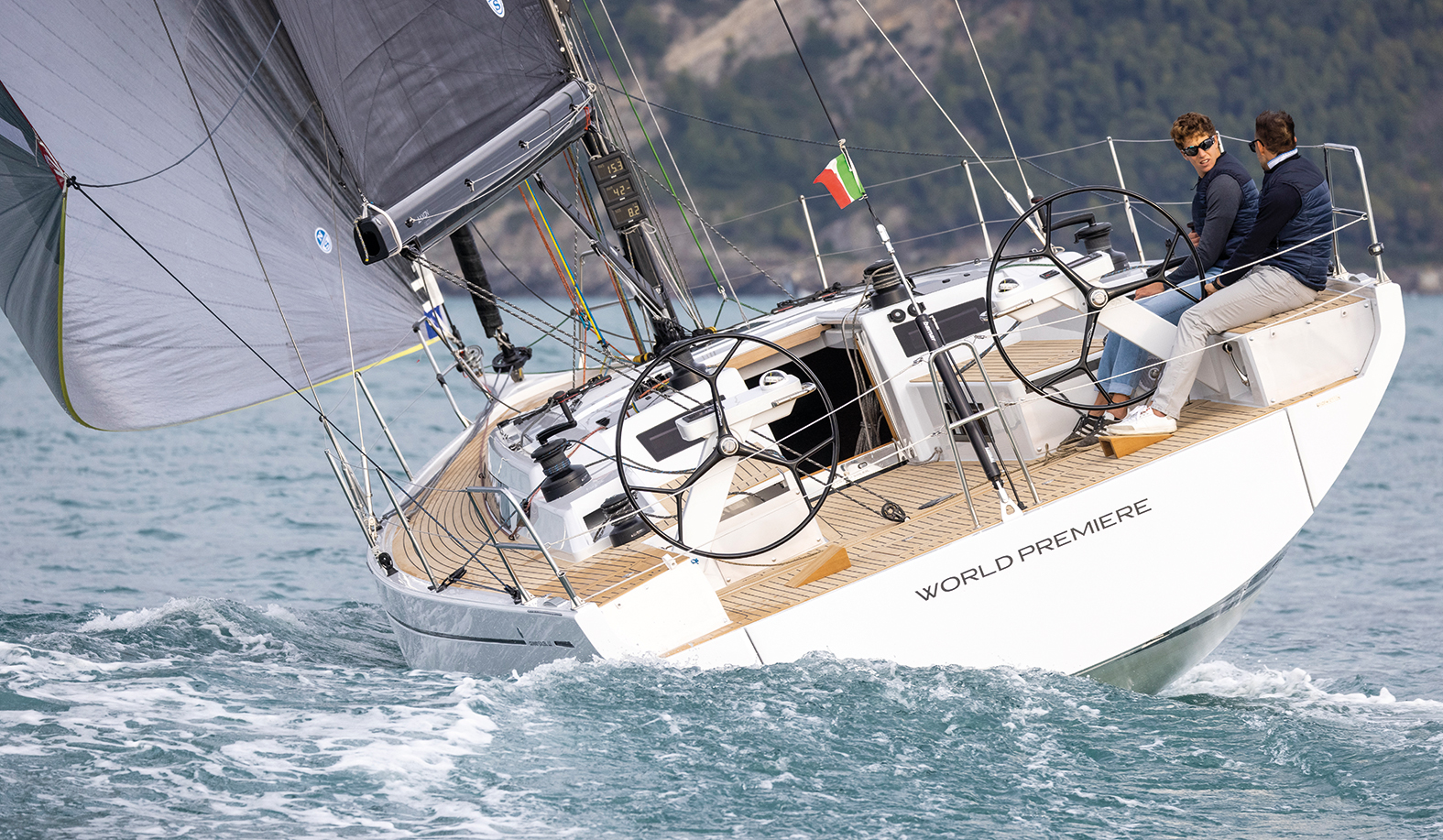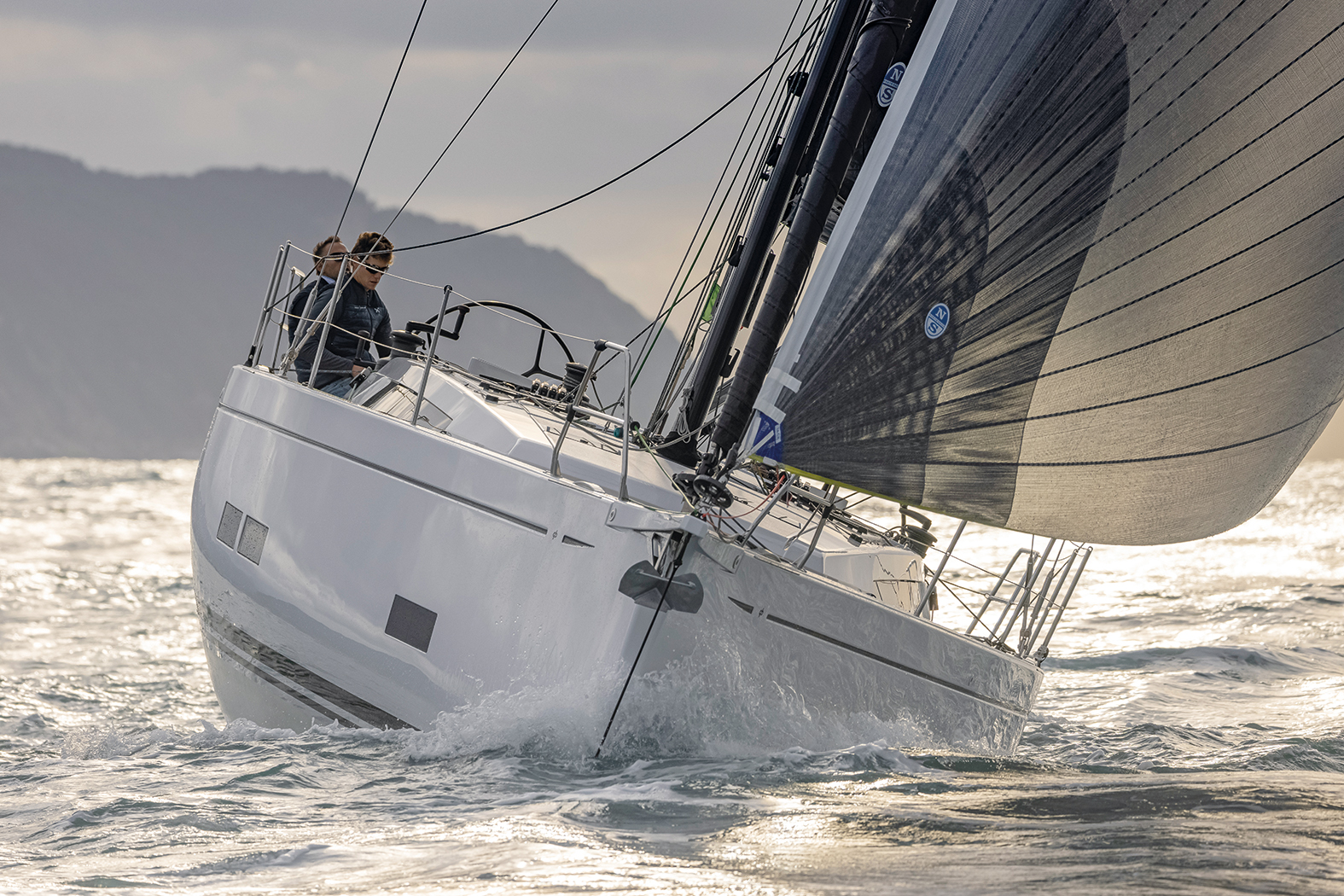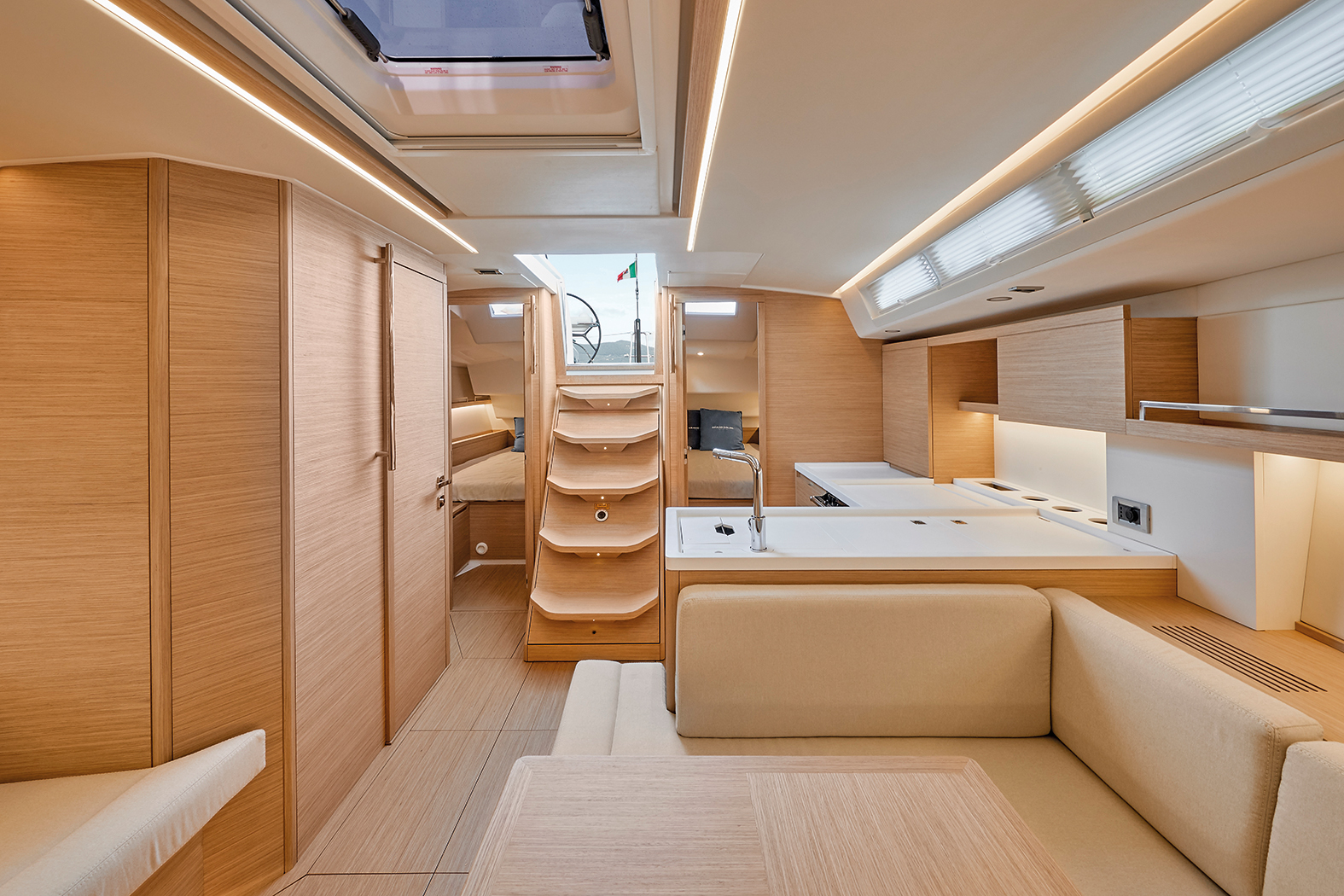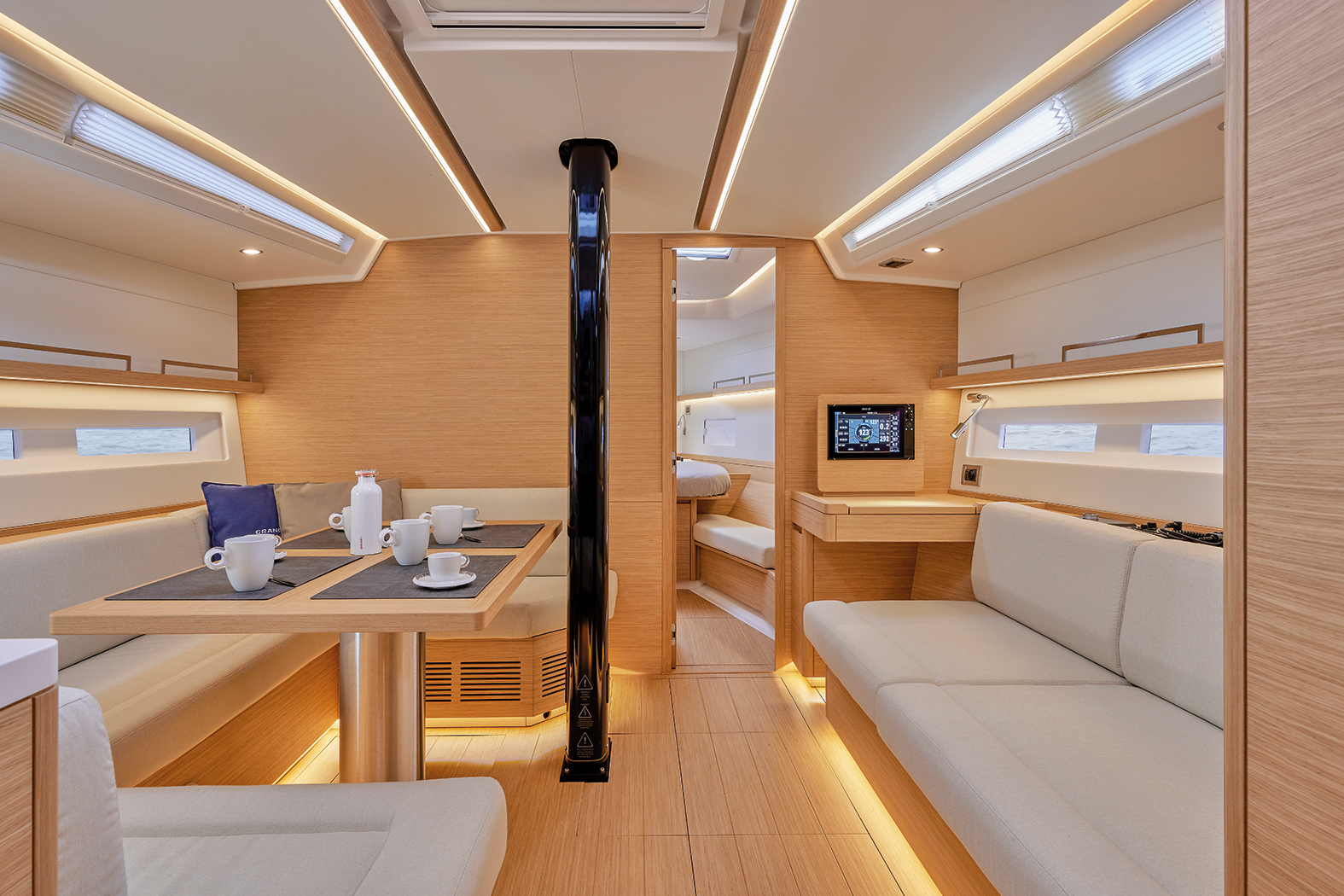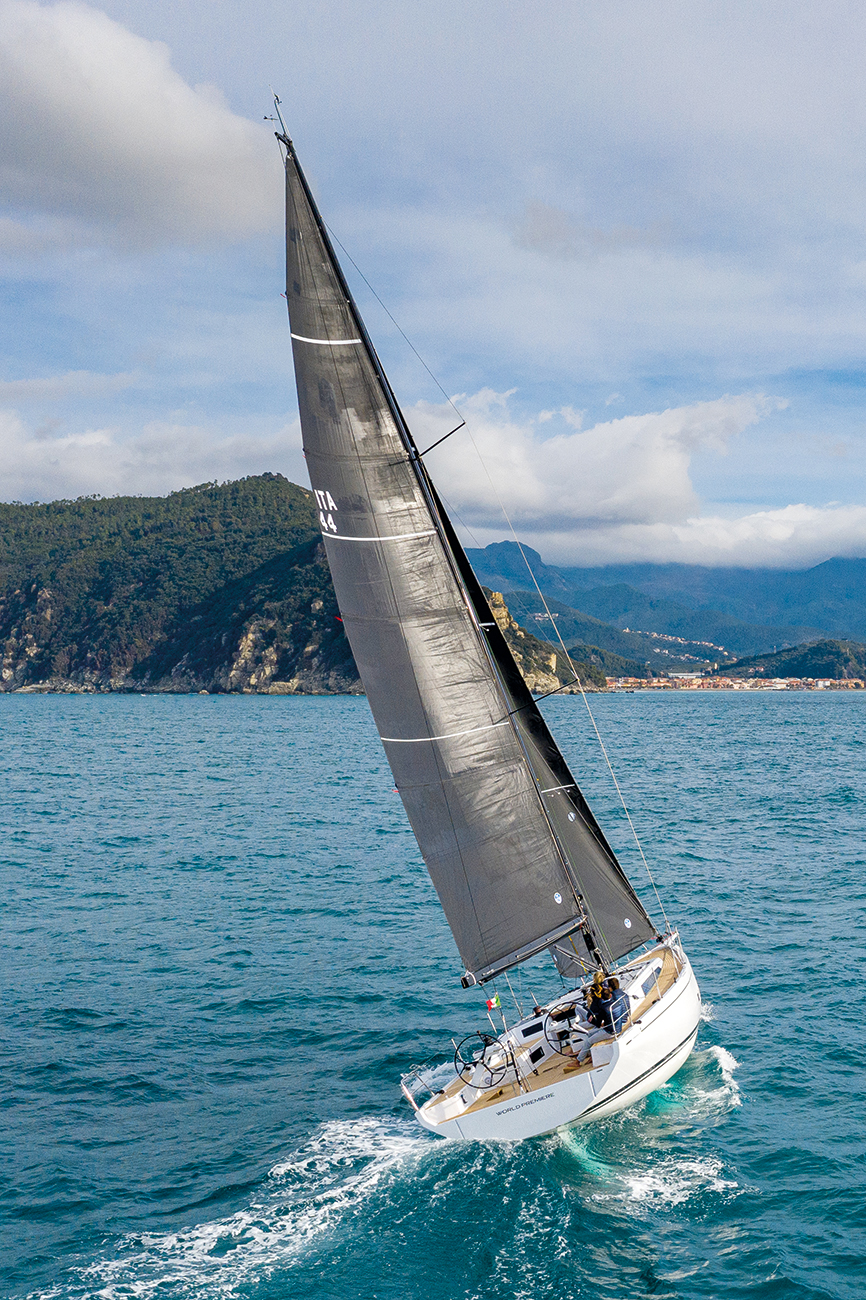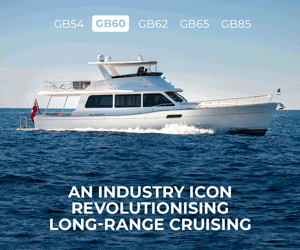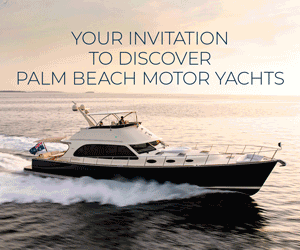Let the sun shine in
Grand Soleil means big sun in French and the GS 44, the latest to hit Australian shores from Grand Soleil Yachts, shines a large and refreshing light on what can be achieved in the margins between bespoke builds and production yachts. But don’t be blinded, this good-looker is a slick mover.
Written by Phillip Ross
08 December 2022
Much may not be known about Grand Soleil Yachts in Australia, but Cantiere del Pardo has in fact been building yachts in Italy since 1973, with the company offering 12 models under its Performance and Long Cruise ranges.
While fitted out for comfortable cruising, the seven-yacht Performance range can also be optimised for racing. To prove that point, the GS 44 has just won the 2022 ORC B Class World Championship for the second year in a row.
Our test GS 44 is from the Performance range, but the Australian owner is a long-time successful racer and wanted his boat built in the Race version with Performance comfort. No problem. Catering each build to the owner’s desires is one of the selling points in which Cantiere del Pardo excels.
As the agent here in Australia, Andrew Withers from Sydney Marine Brokerage, explains: “It’s great to have that amount of owner involvement all the way through the build,” adding this particular owner was in discussion with the builders for three years before going ahead. But it was worth it.
Italians build with a certain flair, and Cantiere del Pardo is no exception.
This boat is a revamp of the previous GS 43 but, with a new hull designer and interior designer, it really is a new build – and stands on its own.
Yacht designer Matteo Polli is well-known in European circles as the wizard of ORC, the Offshore Racing Council, and his boats have won numerous world championships. His brief was for speed in increased hull volume to retain the spacious below-deck plan. The result is a fine bow entry without the bulbous fore sections seen on a lot of yachts.
This flares out to a wide beam for a 13.1-metre waterline length, but it is well aft of the shrouds to maximise space below. The beam doesn’t carry through to the aft sections, negating the hard chines seen on production yachts, and the tuck-in of waterline this creates provides a sea-kindly hull in all weathers.
The result is a low wetted surface hull shape in light airs but, as the wind increases, heeling onto the saucer-shaped stern sections increases the waterline dramatically for heavier air performance.
Our test yacht had the Race modification deck layout; this included four oversized Harken winches on the cockpit coamings for sheets, plus two further winches on the cabin top for halyards and extra sheeting. The aft winches are just forward of the helms so the mainsheet trimmer can sit alongside the helmsperson for excellent communication.
The Performance deck layout moves the genoa winches back as well, so all sail handling can be done by the skipper. The large, low flat cabin top has all lines running under coamings, including the genoa sheets.
When racing, the cockpit centre table is dismantled and stowed in the aft lazarette. Polli has moved the mast aft on this design to allow for larger headsails and Code Zeros, which also provides capability for a selftacking headsail or staysail. If it’s all business up on deck, down below is where the party starts.
These are not yachts built to a price but they’re not overly expensive either. Our test yacht was kitted out in American Oak – this is not laminate but proper handmade wood cabinetry. In the saloon, three hull ports on each side plus opening hatches on the coachroof sides and a single Lewmar hatch in the deckhead provide light and ventilation. ‘
There’s extensive hidden LED lighting along the sole and in the deckhead cover, plus LED spots over the main seating areas. A softtouch button as you step down the five-tread companionway stairs to light the saloon means you don’t have to struggle to the nav station to turn on the cabin lights. A nice touch.
The L-shape galley to port is substantial with Corian benchtops. All have fiddles, and the cover over the cooktop lifts back to provide the splashback when cooking. Both port and starboard cabins include two single berths, which together make a full-size double, and it’s the same in the master cabin.
Each has a suitable amount of cupboard space and shelving for standard cruising needs. To starboard of the companionway is the guest head and shower. Both the guest and master heads include doors to close off the shower area, but I found them a bit restrictive. Both heads have opening hatches and all the doors on board have magnetic latches.
When the doors are open, the metal latch folds down out of sight, reducing potential snagging, and when the door is closed, the magnet inside pulls that latch out of its hideyhole to make a secure close. Neat.
One other point worth making: because this is a racing yacht, Cantiere del Pardo has placed discreet snap buttons strategically throughout the yacht. When the crew are in racing mode, plastic clears can snap over all the woodwork, protecting it from the rigours of ocean racing.
Headroom throughout the saloon and cabins is respectable at over 1.8 metres – the beauty of that wide, flat coach house cabin top. While the layout of the GS 44 is comparably standard to most other yachts this size, it’s the detail and build that clarifies the distinction.
The hull and deck build are closed-cell, foam core sandwich impregnated with epoxy vinylester resin, but there are extensive carbon-fibre reinforcements positioned in the high-stress areas that are substantial. The keelson includes a full carbon-fibre cassette that houses the fin keel and its bulb.
The keel is bolted to the hull with a plate recessed into the cassette with 14 keel bolts that have thick backing plates under the double nuts in pairings of 4 x 4 x 2 x 2 x 2. This has to rank as the strongest keel attachment I’ve ever tested. As mentioned, the woodwork is beautiful, down to the flooring. Each panel has stainlesssteel strips on the edges to ensure movement doesn’t damage the panel, and each panel is fixed with velcro patches to the grid.
Access to all hull fittings is excellent as the entire floor can be lifted as opposed to just the central bilge area. The rig has been upgraded to carbon fibre for the keel-stepped mast and boom; so too is the rudder stock. All fittings are Harken as standard, and the ropage is Dyneema. The big sun was indeed out for our test sail on a wintry Sydney Harbour.
Breeze was shifty in direction and varied from 10 to 18 knots – good conditions to test responsiveness as well speed and height.
This yacht has the full set of North carbon sails, so we went with the fat head main and fat head genoa. Due to the nature of the design, in the lighter airs the deep racing keel of 2.8 metres draft kept the boat upright on its least waterline length. Speed was around 7 knots, but to get the best result our pointing was around 40 degrees apparent off the bow.
Once the breeze kicked in over around 14 knots, a little bit of lean put our longer waterline into play.
Height was the biggest change, easily getting up to 35 degrees while touching on 8 knots boat speed. A couple of times I asked the main trimmer to crank it up and put my steering under pressure. At all times, the steering was direct and handleable, even though the reduced aft area allows for only one rudder.
The Jefa steering is light and responsive. The skipper sits to weather with the main trimmer right alongside for easy communication. The wide saucer beam aft of the wheel means the view of the headsail ticklers is easy all the way up the luff. By the way, the skipper sits on the two outdoor cooler boxes. Now that’s easy access.
Off the wind, we regularly hit over the wind speed in the lighter airs. Unrolling the Code Zero is easy; they’ve come a long way with these roller furlers. Our day out on the harbour was over and Withers reversed the GS 44 back into its marina pen without any concerns, partly due to the drop-down bow thruster that hides under the master cabin bed when sailing.
This is not the first Grand Soleil Withers has sold – there have been five sold into the Australian market so far – and it won’t be the last. For all those looking for a bespoke yacht at a production boat price, this is an option that ticks many boxes. Let the sun shine in.




